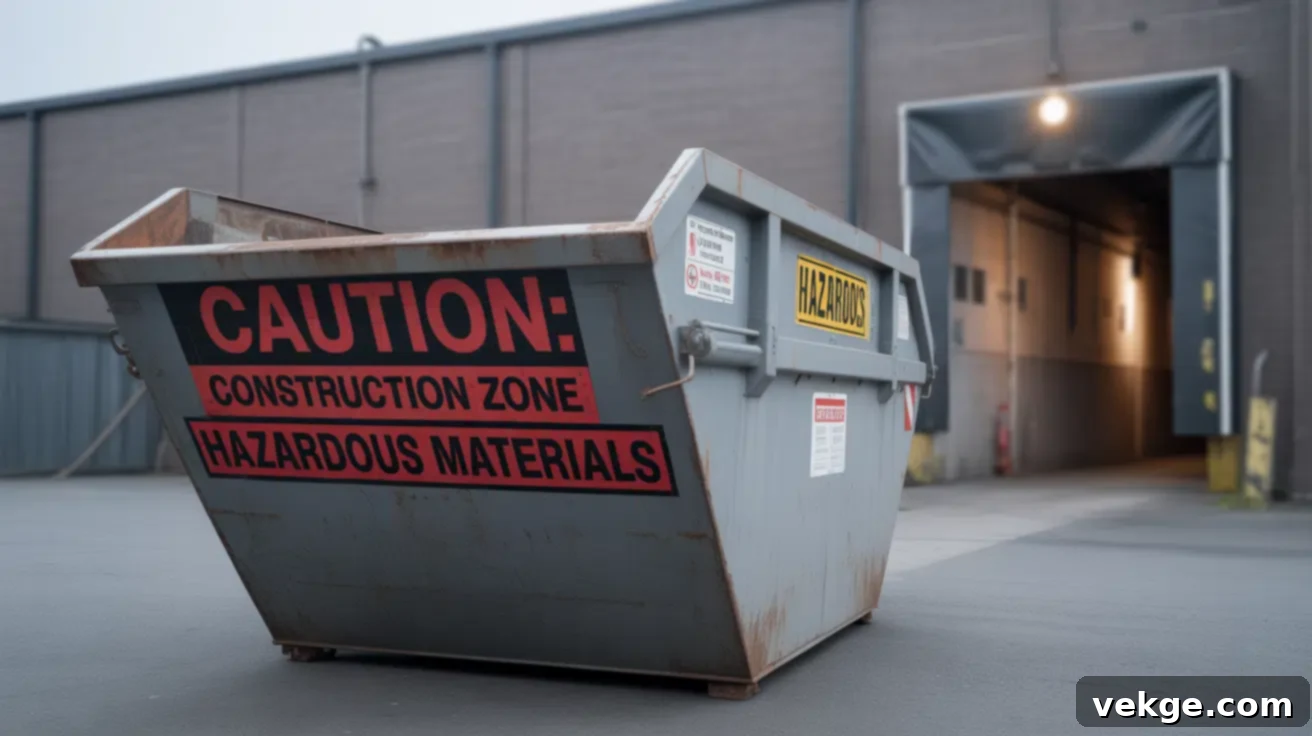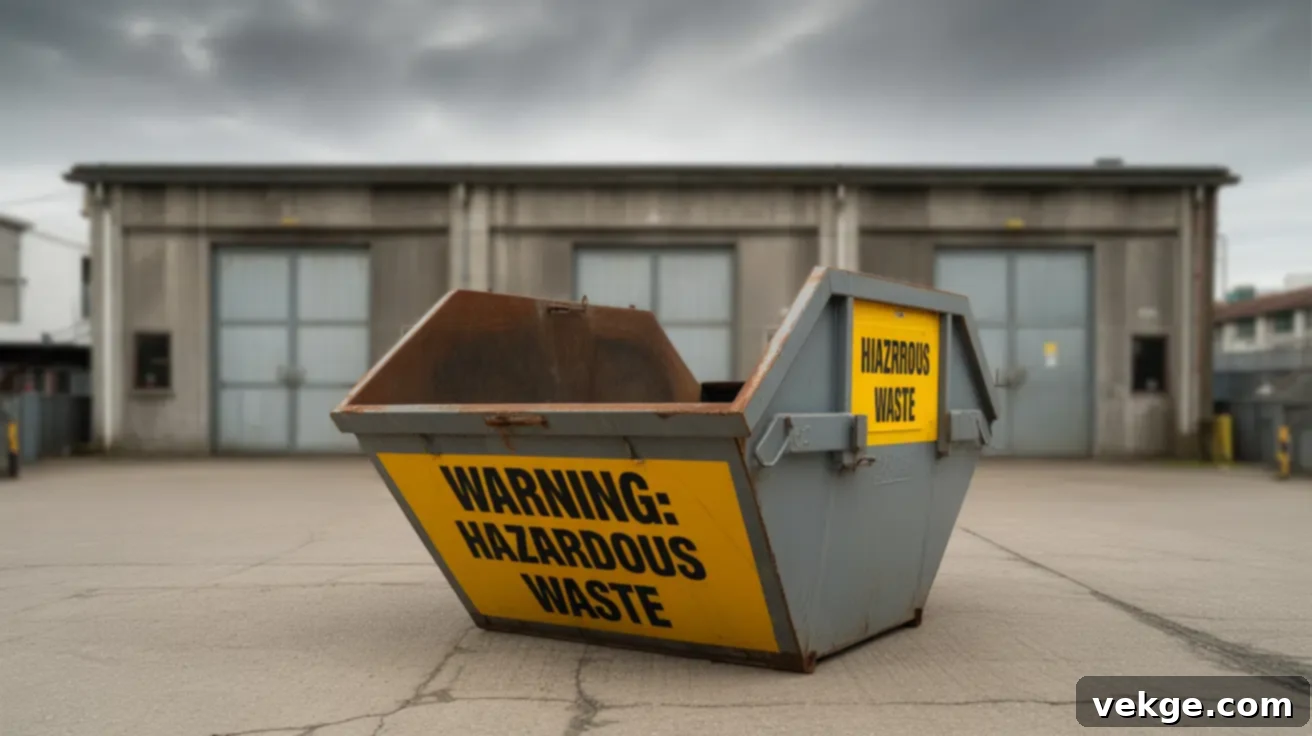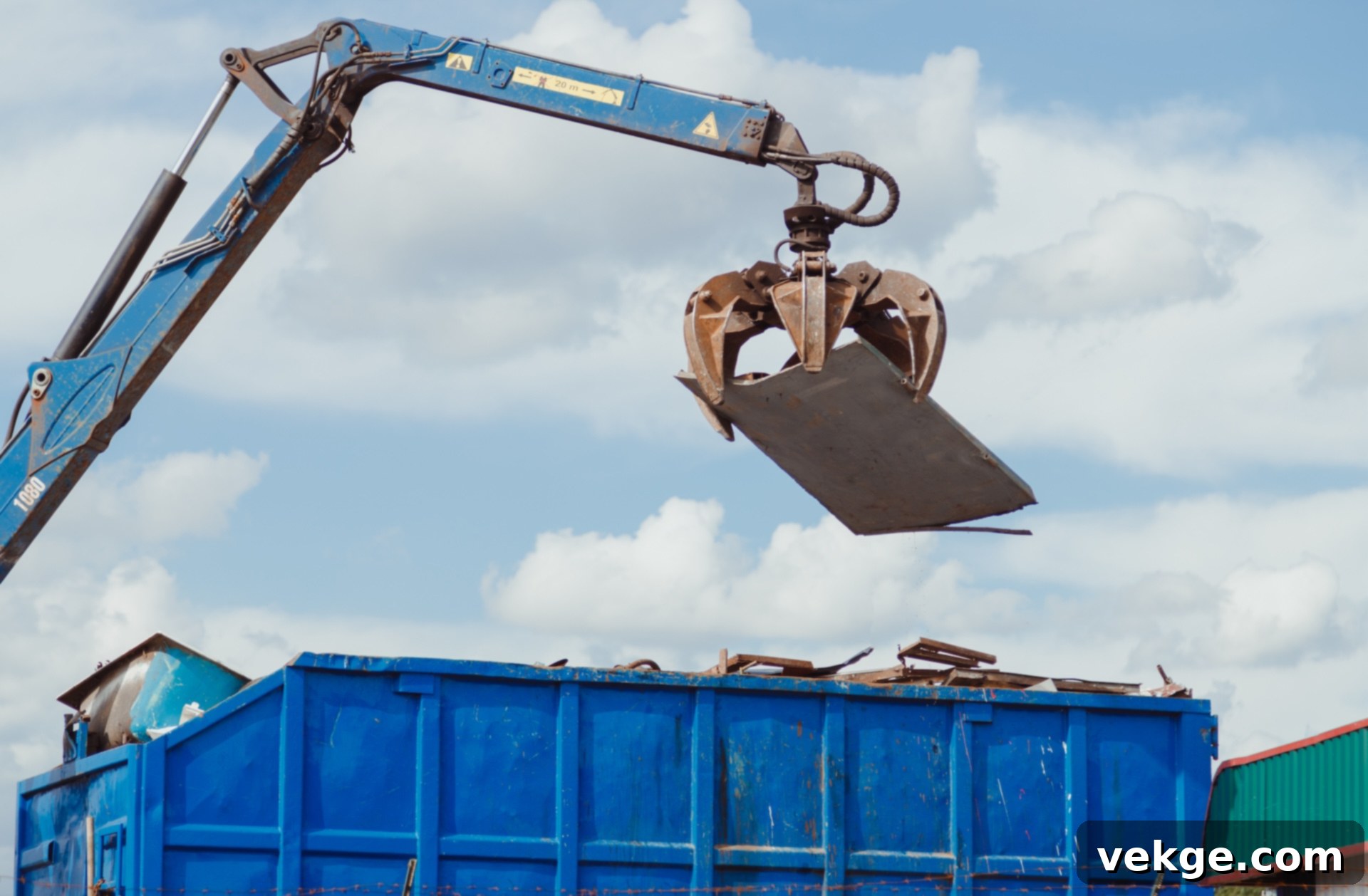Ultimate Guide: What You Can & Can’t Put in a Skip Bin for Responsible Waste Disposal
Embarking on a decluttering spree, a home renovation, or a large-scale construction project often generates a significant amount of waste. While hiring a skip bin offers an incredibly efficient solution for waste management, the convenience comes with a critical caveat: not all waste is created equal. Understanding precisely what materials are permissible and what items are strictly prohibited from skip bins is paramount. This knowledge isn’t just about adhering to regulations; it’s about avoiding unexpected fines, ensuring the safety of waste handlers, and upholding your commitment to environmentally responsible disposal practices.
This comprehensive guide will demystify the world of skip bin waste. We’ll delve into the various categories of waste accepted in different skip bins, shine a spotlight on items you absolutely cannot dispose of, and explain how reputable skip bin hire services act as your crucial partner in managing waste effectively and sustainably.
1. What Can You Put in a Skip Bin? Your Guide to Acceptable Waste
Skip bins are remarkably versatile, engineered to handle a broad spectrum of waste materials. However, the specific items you can dispose of will largely depend on the type of skip bin you select. Choosing the correct bin is the first step towards efficient and compliant waste management. Here are the most common categories of waste accepted:
A. General Waste Skip Bins: The All-Rounder for Household & Commercial Rubbish
General waste skip bins are arguably the most popular choice, designed for a diverse range of non-hazardous household, office, and light commercial waste. They are perfect for spring cleanouts, decluttering projects, and general rubbish removal. Typical items include:
- Household Furniture: Discarded wooden chairs, tables, bookshelves, cabinets, and other non-upholstered furniture.
- Clothing and Textiles: Old clothes, curtains, and linens, provided they are not heavily contaminated with hazardous substances.
- Toys and Small Appliances: Children’s toys, small kitchen appliances (like toasters or blenders, but generally not e-waste like TVs or fridges).
- Packaging Materials: Cardboard boxes, plastic containers, and some Styrofoam packaging. (Note: Always double-check with your skip bin provider regarding Styrofoam, as some facilities have specific restrictions due to its bulk and limited recyclability.)
- Mixed Debris: General household junk, broken household items, and various non-toxic refuse from home cleanouts or garage clear-outs.
It’s crucial to remember that “general waste” implies non-hazardous materials. Any item that poses a risk to health or the environment must be handled separately.
B. Green Waste Skip Bins: Your Solution for Garden & Landscaping Debris
For those tackling garden overhauls, tree pruning, or landscaping projects, a green waste skip bin is the ideal choice. These bins are specifically designated for organic, biodegradable garden materials, facilitating composting and recycling efforts. Accepted items typically include:
- Grass Clippings: Freshly cut or dried lawn clippings.
- Tree Branches and Leaves: Pruned branches (usually with a diameter limit), fallen leaves, and other tree debris.
- Weeds and Plants: All types of weeds, spent flowers, and general plant matter.
- Small Logs (Untreated Wood Only): Pieces of untreated timber or small logs, perfect for chipping or mulching.
Prohibited: It’s important to note that soil, rocks, large tree stumps, and treated timber are generally not accepted in green waste bins, as they require different processing or disposal methods. Always clarify with your provider if you have mixed garden debris.
C. Construction and Demolition (C&D) Waste Skip Bins: For Building & Renovation Projects
Renovation, demolition, and building projects generate heavy, often bulky waste materials. Heavy-duty skip bins are specifically designed to accommodate this type of debris. These bins are robust and built to withstand the weight and sharp edges of construction waste:
- Bricks and Concrete: Broken bricks, concrete slabs, pavers, and concrete rubble.
- Tiles and Ceramics: Old floor and wall tiles, broken ceramic fixtures.
- Timber and Plasterboard: Off-cuts of timber, old floorboards, plasterboard sheets, and gyprock.
- Rubble and Sand: Various types of rubble from demolition, and excess sand from construction.
Important Consideration: Many skip bin providers offer different types of C&D bins. Some are for “clean fill” (e.g., concrete only, or soil only), which can be more cost-effective as these materials are easily recycled. Others are for “mixed C&D waste.” Always specify your project’s waste type to get the most suitable and economical bin.
D. Heavy Waste (Inert Materials) Skip Bins: Managing Dense, Non-Biodegradable Loads
Heavy waste skips are specifically engineered to handle extremely dense, non-biodegradable materials. These bins are typically smaller to prevent over-weight issues during transport, as the sheer weight of these materials can quickly exceed vehicle limits. Ideal for:
- Pure Bricks: Large quantities of broken or whole bricks.
- Clean Concrete: Concrete slabs, driveways, or footings that are free from contaminants like soil or rebar (unless specified).
- Rocks and Gravel: Excavated rocks, river stones, or gravel.
- Pavers: Old paving stones from patios or pathways.
Due to the substantial weight of these materials, skip bin companies stringently enforce weight limits. Exceeding these limits can result in significant additional charges or even refusal of collection, so it’s vital to communicate the nature and approximate quantity of your heavy waste upfront.
2. What Can’t You Put in a Skip Bin? Prohibited Items and Their Dangers

While skip bins offer incredible utility, certain materials are universally prohibited from general disposal due to stringent environmental regulations, significant safety concerns for waste handlers, or the necessity for highly specialized disposal and recycling processes. Attempting to dispose of these restricted items in a skip bin can lead to substantial additional fees, the refusal of your bin’s collection, or even legal penalties.
A. Hazardous Waste: Risks to Health and Environment
These materials pose severe risks to human health, wildlife, and the environment. They require highly specialized handling and disposal methods to prevent contamination and injury:
- Asbestos: This highly toxic material, commonly found in older buildings, is carcinogenic. It must be identified, contained, and removed exclusively by licensed and certified professionals following strict safety protocols. Never attempt to dispose of asbestos yourself in any skip bin.
- Chemicals: This broad category includes paints (especially liquid paints, solvents, thinners), pesticides, herbicides, strong cleaning agents, and other corrosive or flammable liquids. These substances can leach into soil and groundwater, cause fires, or harm waste workers.
- Batteries: All types of batteries, from standard household AA/AAA to car batteries and modern lithium-ion batteries (found in phones, laptops, power tools), contain toxic heavy metals and can pose fire hazards (especially lithium-ion when damaged). They require specialized recycling.
- Oils and Fuels: Engine oil, cooking oil (in large quantities), petrol, diesel, and other flammable liquids can contaminate other waste, cause fires, and pollute waterways.
- Medical Waste: Sharps (needles, syringes), pharmaceuticals, contaminated dressings, and other biohazardous materials pose significant infection risks and must be disposed of via designated medical waste channels.
- Liquid Waste: Any large quantities of liquids, regardless of their perceived harmlessness, are generally prohibited. Liquids can leak, cause instability during transport, and contaminate other recyclable materials in the skip.
B. Electronic Waste (E-Waste): Valuable Resources & Toxic Components
Electronics contain valuable rare earth metals, plastics, and glass that are highly recyclable. However, they also contain hazardous components like lead, mercury, and cadmium, which can be detrimental if released into the environment. E-waste requires specialized recycling to recover resources and safely manage toxins:
- TVs and Monitors: Old CRT monitors contain lead, while newer flat screens contain other hazardous materials.
- Computers and Laptops: Hard drives, circuit boards, and batteries require specific processing.
- Refrigerators and Air Conditioners: These appliances contain refrigerants (CFCs, HFCs) that are potent greenhouse gases and must be extracted by certified technicians before disposal.
- Mobile Phones and Batteries: Small but highly toxic and flammable if not recycled correctly.
Fortunately, many local councils, retail stores, and specialized recycling centers offer free or low-cost e-waste drop-off and recycling services.
C. Tyres: A Landfill Burden and Fire Risk
Tyres are often banned from landfills in many regions due to their non-biodegradable nature, large volume, and significant fire risk (tyre fires are notoriously difficult to extinguish and release toxic fumes). They must be recycled through specialized programs where they can be shredded, re-purposed for civil engineering projects, or used as fuel.
D. Gas Bottles and Fire Extinguishers: Explosive Hazards
Pressurized containers like gas bottles (LPG, propane, butane) and fire extinguishers pose an extreme explosion risk if subjected to pressure changes, heat, or damage during transport or at waste facilities. These items must be returned to their suppliers, taken to designated recycling centers, or disposed of at specialized hazardous waste facilities.
E. Food Waste: Attracting Pests and Creating Odors
While a few accidental food scraps might be overlooked, large quantities of food waste are generally prohibited. Food waste decomposes, attracting pests (rodents, insects), creating foul odors, and generating methane gas (a potent greenhouse gas) in landfills. Composting or utilizing dedicated organic waste bins provided by your local council are far better and more environmentally friendly alternatives.
F. Mattresses and Bedding: Recycling Challenges
Mattresses are notoriously difficult to recycle due to their complex construction of springs, foam, fabric, and timber. While some skip bin providers might accept them (often for an additional fee), many require separate disposal. Check with your local council or specialized mattress recycling facilities in your area for proper disposal options.
3. Why Are Some Items Prohibited from Skip Bins? Understanding the Rationale
Understanding the reasons behind waste restrictions isn’t just about compliance; it fosters a greater appreciation for responsible waste management. The prohibitions are in place to safeguard our planet, protect workers, and maximize resource recovery:
- Environmental Protection: Hazardous chemicals, heavy metals from e-waste, and toxic asbestos fibers can leach into soil and groundwater, contaminating ecosystems and posing long-term threats to human and animal health. Landfills are not designed to safely contain many of these substances.
- Worker Safety: Waste facility workers and skip bin drivers face significant risks from prohibited items. Asbestos fibers can cause respiratory diseases, sharps can cause injuries and infections, and flammable materials can lead to fires or explosions. Protecting these essential workers is paramount.
- Legal Compliance and Fines: Governments and environmental protection agencies impose strict regulations on the disposal of toxic, hazardous, and difficult-to-manage waste. Non-compliance can result in substantial fines for both the skip bin provider and the individual or business that deposited the prohibited items. In some cases, illegal dumping can even lead to criminal charges.
- Recycling Potential and Resource Recovery: Many prohibited items, such as e-waste, tyres, and mattresses, contain valuable materials that can be recycled, repurposed, or used as alternative fuels. Mixing these with general waste contaminates recyclable streams and sends valuable resources to landfill, negating the potential for a circular economy.
- Landfill Longevity and Efficiency: Prohibited items like tyres and mattresses take up excessive space in landfills and do not decompose readily, reducing the lifespan of these vital waste infrastructure sites.
Dumping prohibited items in a skip bin can lead to a range of undesirable consequences:
- ✔ Extra Fees: Your skip bin provider will likely charge you additional fees for the sorting, removal, and specialized disposal of prohibited items. These charges can often exceed the original skip hire cost.
- ✔ Skip Refusal: In severe cases, especially with hazardous materials like asbestos, the company may refuse to collect the bin entirely until the prohibited items are removed by the customer.
- ✔ Legal Penalties: Depending on the severity and nature of the prohibited item, you could face significant fines or other legal repercussions for illegal or irresponsible waste disposal.
4. How Skip Bin Hire Services Help with Proper Waste Disposal and Sustainability

Reputable skip bin hire providers are more than just a means to haul away rubbish; they play a crucial and active role in promoting responsible waste management and environmental sustainability. They streamline the process, making it easier for individuals and businesses to dispose of waste correctly:
A. Offering Diverse Bin Types for Segregated Waste
Professional skip bin companies provide a range of specialized bins designed to segregate waste at the source, which is critical for efficient recycling and disposal:
- Mixed Waste Skip Bins: Ideal for general household and light construction waste that is non-hazardous and relatively easy to sort at the facility.
- Clean Fill Skip Bins: Specifically for inert materials like soil, sand, concrete, and bricks, which can be readily recycled into new construction materials.
- Green Waste Skip Bins: Dedicated to garden debris, ensuring organic materials can be composted or mulched, diverting them from landfill.
- Dedicated C&D Skip Bins: For mixed construction and demolition waste, often sorted at a transfer station to recover recyclables.
B. Providing Clear and Accessible Guidelines
A reliable skip bin company will always prioritize transparency. They will clearly inform customers about acceptable and prohibited items upfront, both on their website and during the booking process. This proactive communication helps prevent errors and ensures compliance.
C. Partnering with Advanced Recycling Facilities
Many leading skip bin providers go beyond mere collection. They actively partner with modern waste transfer stations and recycling facilities. After collection, the waste is often meticulously sorted, with recyclables extracted and processed. This commitment to recycling significantly reduces the volume of waste sent to landfill, contributing to a more circular economy.
D. Facilitating Special Waste Solutions (Often for a Fee)
While generally not accepted in standard skips, some companies offer or can direct you to additional services for certain types of challenging waste, such as asbestos removal (through licensed contractors), or specialized e-waste collection, often for an extra, designated fee. This ensures even the trickiest waste is handled safely and legally.
5. Tips for Efficient and Responsible Skip Bin Use
To maximize the value and effectiveness of your skip bin hire, and to ensure a smooth waste disposal process, follow these best practices:
- ✔ Sort Waste Before Loading: Whenever possible, sort your waste into categories (e.g., green waste, recyclables, general rubbish) before loading. This makes it easier to choose the right bin type and can save you money if you opt for dedicated skips.
- ✔ Avoid Overfilling: Most skip bins have a clearly marked fill line. Overfilling your skip is a serious safety hazard during transport and can lead to refusal of collection or additional charges. Ensure nothing protrudes above the rim.
- ✔ Check Weight Limits: Be mindful of the weight limits, especially for heavy materials like concrete, bricks, or soil. If you’re unsure, it’s always better to discuss your project’s waste with the provider to determine the appropriate bin size and type.
- ✔ Ask About Restricted Items: If you have any doubt whatsoever about an item, contact your skip bin provider before placing it in the bin. A quick phone call can save you time, money, and potential legal issues.
- ✔ Load Strategically: Place heavier, bulkier items at the bottom of the skip first, followed by lighter materials. This optimizes space and prevents lighter items from being crushed or creating gaps. Break down larger items if possible to maximize capacity.
- ✔ Plan Skip Placement: Ensure the skip can be placed on a level, accessible surface. Consider if you need a permit for street placement and ensure there’s enough space for the delivery truck to maneuver.
6. Alternatives for Prohibited Waste: Dispose Safely and Legally
Having items that cannot go into a standard skip bin is common. Fortunately, numerous responsible and legal disposal methods exist. Here are some alternatives:
- Council Hard Rubbish Collections: Many local councils offer scheduled hard rubbish collection services for large household items (like old furniture, appliances, or mattresses) that don’t fit in regular bins. Check your local council’s website for schedules and acceptable items.
- Specialized Recycling Programs: Look for dedicated drop-off points for specific materials. This includes e-waste recycling centers, tyre recycling depots, and facilities that accept used oils or car batteries.
- Hazardous Waste Facilities: For chemicals, paints, solvents, and other truly hazardous materials, your local government will usually operate or list specific hazardous waste disposal facilities or collection days. Never pour these down the drain.
- Charity Organizations: For items still in good condition (furniture, clothing, working appliances), consider donating them to local charities. This helps others and reduces waste.
- Scrap Metal Merchants: Old metal items (e.g., washing machines, bicycles, metal off-cuts) can often be taken to scrap metal dealers for recycling, sometimes even for a small return.
Conclusion: Skip Smart, Dispose Right – Your Role in Responsible Waste Management
Navigating the nuances of waste disposal can seem daunting, but understanding what you can and cannot put in a skip bin is a fundamental step towards efficient, cost-effective, and environmentally friendly waste management. Not all waste belongs in a single skip bin, and making informed choices ensures a smooth process, avoids unexpected charges, and significantly contributes to a cleaner, healthier planet.
Whether you’re undertaking a small home renovation, a large garden cleanup, or a major commercial construction project, professional skip bin hire services offer an indispensable and convenient solution. However, their effectiveness hinges on your adherence to the rules. Always prioritize checking with your chosen provider before loading any questionable items. When in doubt about a specific material, err on the side of caution and actively seek out alternative, specialized disposal methods.
Responsible waste management begins with making informed decisions. By selecting the correct skip bin for your specific waste type, filling it appropriately within guidelines, and ensuring prohibited items are diverted to their proper disposal channels, you play a vital role in minimizing landfill waste and protecting our precious environment. Skip smart, dispose right!
